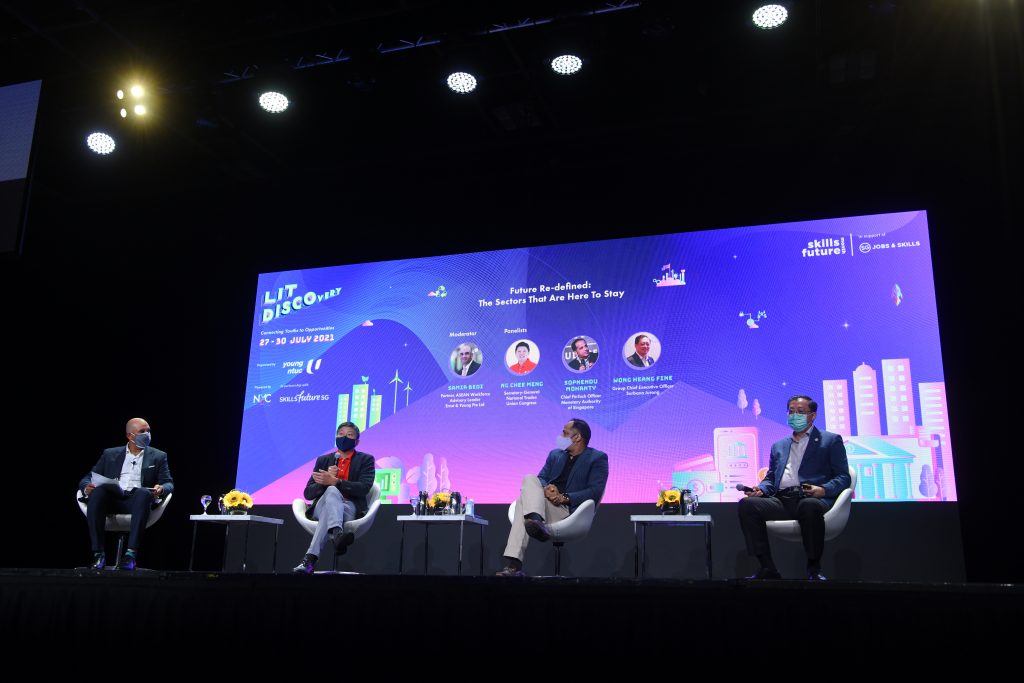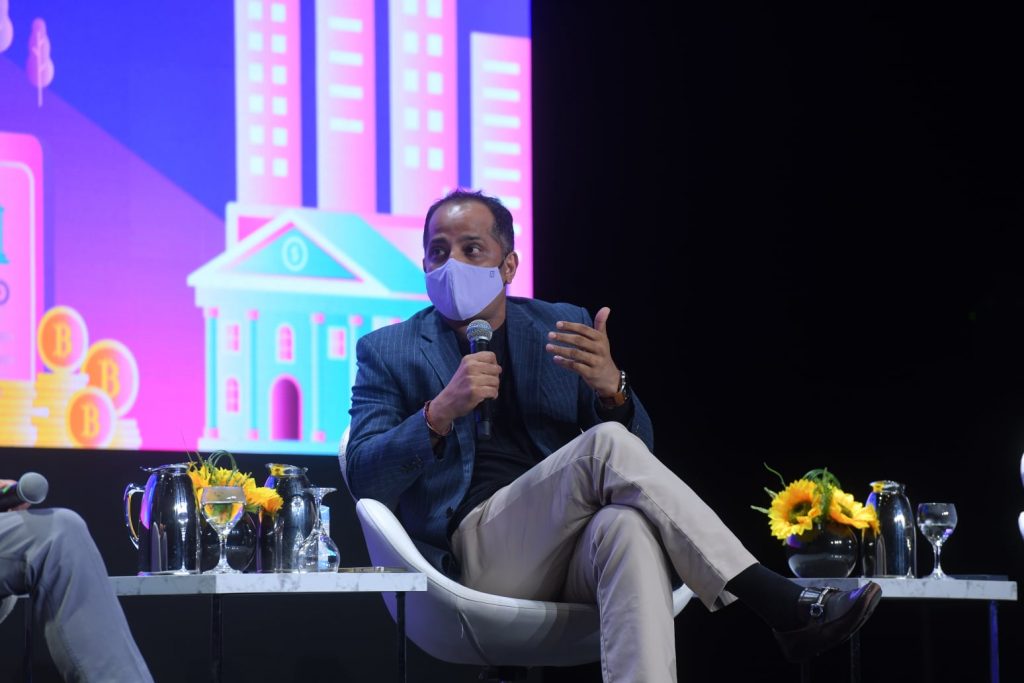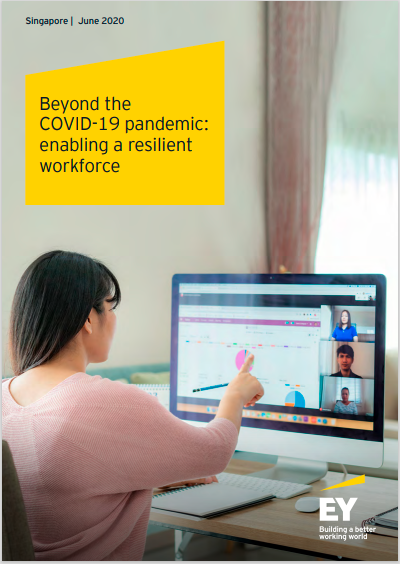Future Redefined: The Now, The Here to Stay, The Future
Share

The multiple waves brought by the pandemic have left many badly hit sectors on a pendulum swing – from one moment hopeful to another moment in despair. Each time the restrictions begin to ease and travel bubbles make things hopeful, the spike in the number of COVID cases would set things back to almost square one again.
For a clearer gaze into the misty future, we have gathered the views of different business leaders on the way forward. Below is an interview with Mr. Samir Bedi, Partner, ASEAN Workforce Advisory Leader at Ernst & Young:
Question: The pandemic is likely to stay for some time. How do you think the badly hit sectors can last through this time and work towards recovery?
Mr. Bedi: Ongoing experience with the COVID-19 pandemic shows that companies that undertook transformation efforts to survive and grow can be broadly put into two groups. The first group of companies innovated within their industry lines, for example, retail outlets expanding their e-commerce operations to maintain or improve direct access to consumers. The second group of companies pivoted from their current core industries into new areas of growth in other industries.
For example, food manufacturing companies shifted away from providing B2B service offerings to restaurants and hotels, and moved to retailing products through supermarkets, given that their customer bases were working from home and dining out less.
While the approach of the first group has kept some companies afloat, the reality is that certain sectors have been more vulnerable to the disruption caused by the COVID-19 pandemic. With uneven sectoral recoveries to be expected, companies and governments need to work together to support and drive cross-industry transformations.
By helping companies to better understand the adjacent sectors and business lines that they can pivot to, given their organic skills and capabilities, they can create more diversity and resilience in their revenue channels.
Question: As more businesses are taking the leap of faith to embrace cross-industry transformation, what are some opportunities that could arise for the labour market?
Mr. Bedi: As employment opportunities vary – and shift – across sectors, it is important to find a way to facilitate redeployment from “at-risk” to “opportunistic” sectors for companies to address their manpower needs and for our workers to optimize job opportunities and mitigate unemployment risks.
Based on our in-depth analysis that was published in a white paper, “Beyond the COVID-19 pandemic: enabling a resilient workforce”, there are common or transferable skills across sectors.
This means that if hiring is viewed primarily from the perspective of skills and secondarily from a sector lens, this will then allow a reimagination of the country’s talent pool and individual worker’s employability.
Such a skills-based approach can be used to identify multiple pathways for different skills and open up job opportunities previously closed to individuals outside the sector.
Question: Besides the reimagination of the talent pool, how have tech and the mindset of change pivoted growth for some companies despite the pandemic?
Mr. Bedi: Prior to the pandemic, organizations already recognized the need for digital transformation and we’re looking at ways to leverage technology to remain relevant to consumers and improve productivity levels. As to how we live, work, and play has abruptly and drastically moved online and to virtual environments, this has shifted digital transformation from being important to urgent.
In the past, the implementation of a remote worker policy in a large organization would have probably taken two to five years to pass through the approval processes – but organizations have made the move in a matter of days and months for the sake of survival.
In doing so, organizations demonstrated commitment and agility in their approach to digital transformation, bypassing bureaucracy, and red tape in approval processes.
As companies continue stepping up their digitalization efforts, putting humans at the center will be the key to success.
Just as enabling remote working requires more than the installation of video conferencing software but requires the entire workforce to adopt new behaviors and mindsets to embrace flexibility, other digital transformation initiatives will also hinge on workforce transformation.
However, this is precisely the area that is a challenge for all organizations. Resistance to change, especially when it comes to disruptive new processes and unfamiliar new technologies, is not uncommon. Business leaders will need to allay fears that new technologies will always displace jobs and to that end, redesign jobs and train employees to get ready for their new roles.
Essentially, job redesign seeks to create a more optimal combination of tasks in a job role for efficiency and productivity. Employees will need to be re-skilled and up-skilled to undertake their new roles. Companies can also leverage the various attachments, traineeships, and mid-career pathway programmes to expand their workforce footprint and access new skill sets.
Question: With transformations happening at a breakneck speed, how can young professionals keep up and lead the current economy to greater heights?
Mr. Bedi: The next generation that is coming of age amid the uncertainties and changes of the pandemic, possesses the unique strengths that could help them thrive in these future worlds.
This requires them to own and take advantage of their unique experiences and skills. From school shutdowns to remote working full time, they are the first generation to learn and work in fully virtual environments. With entire industries being disrupted, they will likely work in multiple jobs across sectors that will require them to continually upskill and reskill.
As a digital generation, they will be exposed to new technologies and acquire multi-tasking abilities and digital skills.
By leveraging and optimizing the skills, experiences, and mindsets that are being shaped by the megatrends around them, our youths have the power to define and shape the new normal. They are in a unique position to take charge by innovating, problem-solving, and setting the change agenda as the future consumer, future worker, and future leaders.
Complementing Mr. Bedi’s sharing, some highlights gathered from different leaders who spoke at LITDISCOvery 2021, a career symposium organised by Young National Trade Union Congress (NTUC) and supported by Influential Brands, are as follows:

Mr. Heng Swee Keat, Deputy Prime Minister and Coordinating Minister for Economic Policies remarked, “COVID-19 will eventually fade, but it has accelerated structural shifts that will stay with us for a long time.”
Speaking on the opportunities ahead, he said, “We are in a region that is poised to ride on the wave of opportunities created by these new trends. In Southeast Asia, there is already a thriving start-up scene in the digital economy.
“Many of you would be familiar with names such as Grab, Shopee, CARRO, Go-Jek, and Tokopedia. There is a lot more runway for growth given the favourable demographics in our region. The digital economy is projected to grow three times by 2025.”
As a further piece of advice and a note of encouragement, Mr. Heng said, “The world is changing at a rapid pace. Just look at the list of top 10 companies in the Fortune 500 – more than half of these companies were not on this list just ten years ago. The notion of lifelong employment is much less relevant today – it is lifelong employability that matters more.
“If you remain nimble, and are willing to learn new things along the way, you will be able to shape your own future.”

Mr. Sopnendu Mohanty, Chief FinTech Officer at the Monetary Authority of Singapore also shared some upsides that are coming out of the pandemic. With the FinTech space as a case in point, Mr. Mohanty proudly shared that within a span of five years, since the beginning of the FinTech industry in Singapore, the sector has recently produced the nation’s first unicorn startup – Nium.
“The pandemic has pushed all the FinTech companies to significantly accelerate their solutions across the market. And that really gives a huge push to these companies because it’s very rare within a five-year runway, to get to a billion dollar status. And it happened in Singapore. We expect this momentum to grow further,” he said.
Besides that, Mr. Mohanty presented the avalanche of employment opportunities in the booming sector, “For the last five years, we have created close to 10,000 new jobs in Singapore. Every time you go to the Singapore Fintech Association website, there are jobs available for people to apply.”
Debunking the common misperception that tech knowledge and skillsets are needed to secure employment in the FinTech sector, he added, “The founder who starts a FinTech company is trying to solve a business or product problem. So the kind of people that need to come together to solve the problem is not the only tech. They need people who can design products well, people who can capture requirements properly, people who can manage projects.”
Mr. Ng Chee Meng, Secretary-General at NTUC said with regards to the shift towards an increasingly digital economy, “Last year, NTUC was very busy helping in saving jobs and helping workers with livelihood. But even at the end of 2020, we have already started to pivot… to help employers look at the possibilities enabled by the digital.”

Mr. Wong Heang Fine, Group Chief Executive Officer at Surbana Jurong Private Limited remarked on the same note, in the context of the largely traditional manufacturing sector. “Today, one of the sectors that emit the most carbon is the manufacturing of cement but things are going to change. We are leveraging technology intensively on technology… away from the traditional way of doing and looking at things,” he said.
Succinctly summed by Mr. Bedi, “As industries leverage technology to accelerate change, industries are being transformed, reshaped, and reimagined. The speed of change will only accelerate as disruptive forces continue to challenge norms, blur boundaries, and create new future worlds.” While the challenges of adapting to new realities remain, the opportunities ahead in the road to recovery are also endless.
















